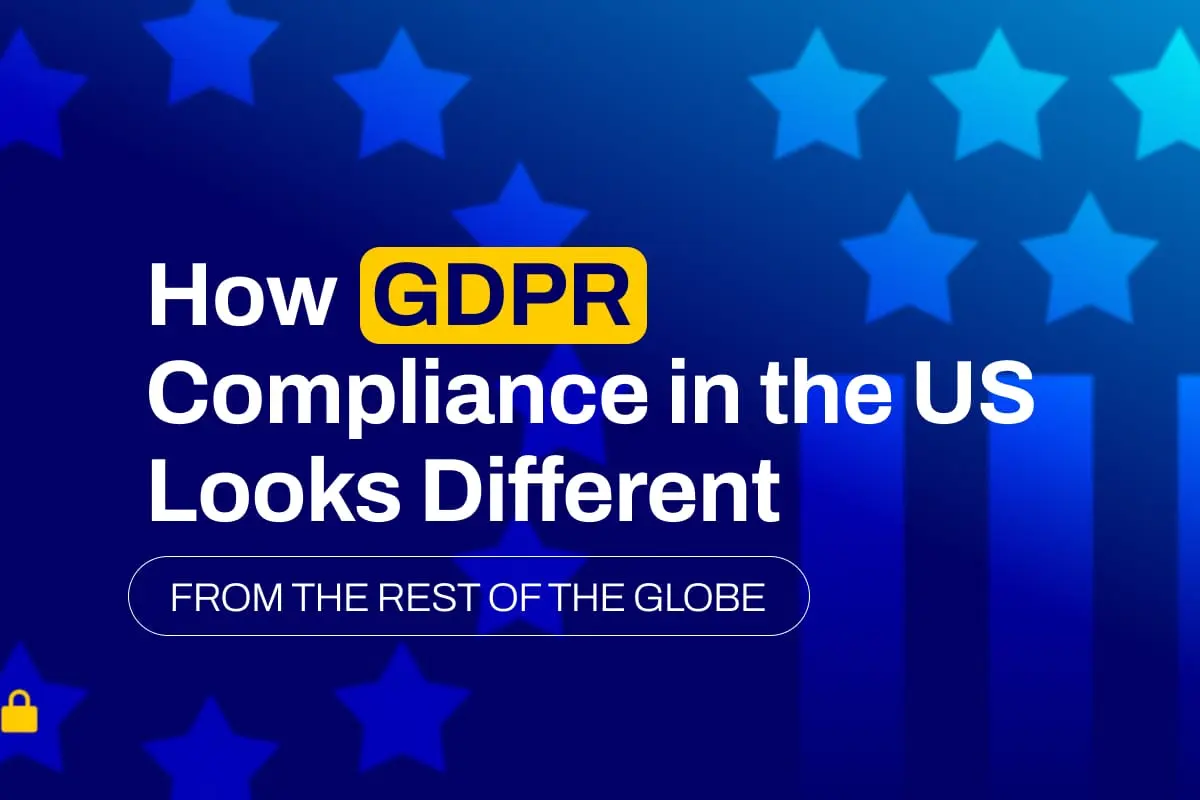
How GDPR Compliance in the US Looks Different from the EU
Data is arguably the most valuable commodity on the planet, therefore data privacy and protection are of paramount concern globally. With personal information being sold on the black market and cybercrime on the rise, consumer privacy and the security of their data are now more important than ever before.
The General Data Protection Regulation (GDPR) is a comprehensive set of regulations designed to protect the privacy and data rights of European Union (EU) citizens. While GDPR is primarily focused on Europe, its influence extends beyond its borders, affecting businesses around the world.
RELATED: Forming a Data Collection Plan: Why It’s Needed and What to Do With It
Unpacking Territorial Scope
One of the rudimentary differences between GDPR compliance in the US versus the rest of the world is the territorial scope of the regulation. In clarifying the territorial nuances, GDPR applies to all companies and organizations that process personal information of EU citizens, regardless of where they’re located. This means that US organizations that provide goods and services and subsequently interact with EU citizen data must comply, even if they don’t have a physical presence in Europe.
In contrast, the US data protection laws and regulations are designed at a state level. There are no federal data privacy and protection laws regulating companies but rather sector-specific laws like the Health Insurance Portability and Accountability Act (HIPAA) for healthcare data and the Gramm-Leach-Bliley Act (GLBA) for financial data. These are typically specific to industry or circumstance, nowhere close to the far-reaching regulations of GDPR.
Opt-In Versus Opt-Out in the US
GDPR mandates that businesses seek consent using an opt-in model. In the EU, this is regarded as standard practice, and businesses are aware that they must get individuals’ express consent before collecting or processing personal data. They understand that they need to be completely transparent about the methods of processing personal data and what it will be used for. They also have to make it simple for data subjects to opt out at any time. The consent record must be stored in a secure database as evidence of the opt-in.
In contrast, US companies tend to use a default opt-out model. This model often has pre-ticked checkboxes that can be overlooked by data subjects or remain silent about consent. This means that by default, organizations can collect, process, and store personal data. In the opt-out model, the data subject must request that their data is not used. This is usually through a tedious clunky process or by having to directly contact the organization.
Understanding the differences between opt-in and opt-out models is critical to GDPR compliance in the US. Unlike EU-based organizations, these regulations are not industry standard and require a learning curve in America. They further highlight the cultural, legal, and regulatory variations between the regions.
Penalties and Enforcement
GDPR enforces stringent penalties and fines for non-compliance. Fines can range up to €20 million or 4% of an organization’s global annual revenue, whichever is higher. For less severe infringements, fines are €10 million or 2% of a firm’s annual revenue. The EU also has an established centralized protection authority known as the European Data Protection Board (EDPB) to coordinate data protection authorities across member countries.
In contrast, penalties in the US are less severe and because most data protection is not controlled at a federal level, enforcement mechanisms are difficult to manage. With various federal and state agencies responsible for different aspects of data protection, fines can vary significantly depending on the specific state laws and the nature of the violation. This leaves room for negotiation and objections that can cost the state time and money to defend.
Data Breach Notification
Another key difference is the issuing of data breach notifications. According to GDPR, organizations are required to notify data protection authorities and the affected data subjects of a data breach within 72 hours of becoming aware of it. GDPR also stipulates specific information organizations must disclose as part of the notification, i.e. detailed information about what caused the breach, ramifications, and steps taken to minimize the risk.
Again, because data breach notification laws are controlled at the state level in the US, there are no standard timelines. Some states have strict notification timelines, while others have more lenient guidelines. This patchwork approach to data privacy and protection poses a serious challenge for US-based organizations – they must comply with different state and federal laws if they operate nationally and with GDPR if they operate internationally.
Data Protection Officers (DPOs)
GDPR stipulates that organizations processing and collecting large amounts of personal data or whose core business is to systematically monitor consumer behavior must appoint a Data Protection Officer (DPO). The DPO is responsible for ensuring GDPR compliance and acting as the central point of contact for data protection-related activities, including liaising with data protection authorities.
There is no equivalent requirement to appoint a DPO for GDPR compliance in the US. This variation reflects the American approach to decentralized data privacy and protection, where regulatory requirements are often determined at either a state level.
Challenges in GDPR Compliance for US Organizations
Given the differences outlined above and the decentralized nature of data protection laws and regulations in the US, GDPR compliance poses unique challenges for US businesses. Some of the challenges they may face include the following.
Compliance Complexity: US organizations that operate internationally or handle EU citizen data must navigate both GDPR and various US laws. This makes compliance cumbersome and could result in unnecessary costs or hefty penalties and fines.
Data Mapping: GDPR places a strong emphasis on identifying and mapping the flow of personal data. With data stored in various systems and locations, US businesses may need help to prove compliance.
Cultural Differences: When it comes to data privacy, data protection, and human rights, GDPR is built using European cultural values as its foundation. This could pose a serious challenge for US organizations, as adapting corporate culture and practices to align with these values may be a significant change for some organizations.
Legal Expertise: Many US companies will need to hire legal and compliance experts to navigate GDPR complexities.
Technical Infrastructure: GDPR compliance necessitates the implementation of data protection controls, consent management, infosec controls, and cybersecurity solutions. This translates to additional capital and operating expenditure as US businesses will need to invest in updating their systems and technical infrastructure.
Conclusion
We can conclude that GDPR compliance in the US differs significantly from the rest of the world. Patchwork, decentralized data privacy and protection laws split between varying state regulations and federal-specific laws introduce severe complexities for US organizations that operate at a global scale. Then add on the complexities of GDPR regulations for the personal data of EU citizens.
To successfully navigate these challenges, US-based organizations need to invest in legal expertise, adapt their corporate culture, and ensure their technical infrastructure aligns with GDPR’s stringent requirements.
Adapting to the changing data privacy landscape is not only a matter of compliance but also a reflection of a commitment to protecting human rights and maintaining the trust of customers.
Learn how DESelect Segment and Engage not only help you stay compliant with international regulations, but also maximize the impact of your Marketing Cloud data.










